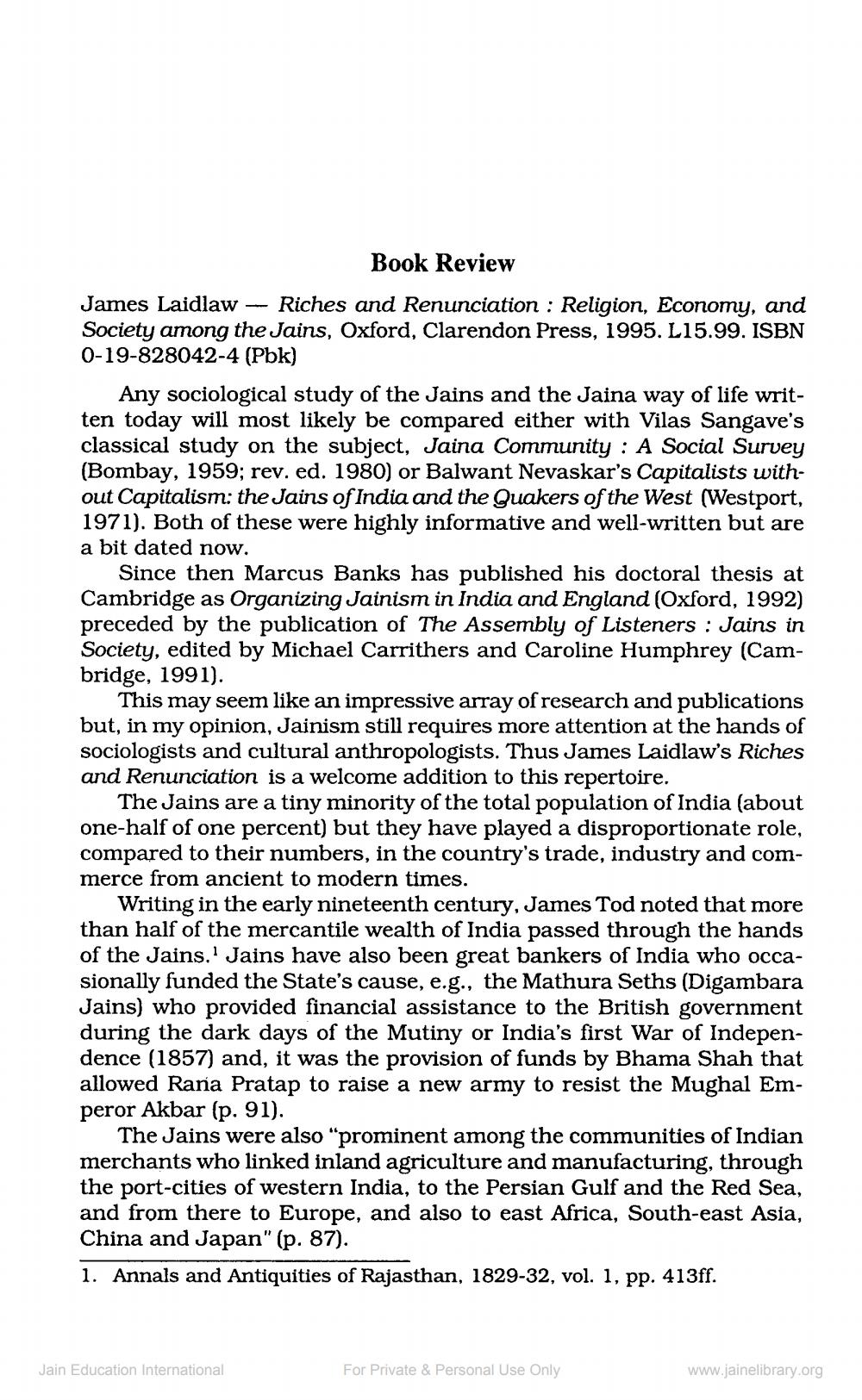Book Title: Jain Journal 1995 07 Author(s): Jain Bhawan Publication Publisher: Jain Bhawan Publication View full book textPage 3
________________ Book Review James Laidlaw Riches and Renunciation: Religion, Economy, and Society among the Jains, Oxford, Clarendon Press, 1995. L15.99. ISBN 0-19-828042-4 (Pbk) -- Any sociological study of the Jains and the Jaina way of life written today will most likely be compared either with Vilas Sangave's classical study on the subject, Jaina Community: A Social Survey (Bombay, 1959; rev. ed. 1980) or Balwant Nevaskar's Capitalists without Capitalism: the Jains of India and the Quakers of the West (Westport, 1971). Both of these were highly informative and well-written but are a bit dated now. Since then Marcus Banks has published his doctoral thesis at Cambridge as Organizing Jainism in India and England (Oxford, 1992) preceded by the publication of The Assembly of Listeners: Jains in Society, edited by Michael Carrithers and Caroline Humphrey (Cambridge, 1991). This may seem like an impressive array of research and publications but, in my opinion, Jainism still requires more attention at the hands of sociologists and cultural anthropologists. Thus James Laidlaw's Riches and Renunciation is a welcome addition to this repertoire. The Jains are a tiny minority of the total population of India (about one-half of one percent) but they have played a disproportionate role, compared to their numbers, in the country's trade, industry and commerce from ancient to modern times. Writing in the early nineteenth century, James Tod noted that more than half of the mercantile wealth of India passed through the hands of the Jains.' Jains have also been great bankers of India who occasionally funded the State's cause, e.g., the Mathura Seths (Digambara Jains) who provided financial assistance to the British government during the dark days of the Mutiny or India's first War of Independence (1857) and, it was the provision of funds by Bhama Shah that allowed Rana Pratap to raise a new army to resist the Mughal Emperor Akbar (p. 91). The Jains were also "prominent among the communities of Indian merchants who linked inland agriculture and manufacturing, through the port-cities of western India, to the Persian Gulf and the Red Sea, and from there to Europe, and also to east Africa, South-east Asia, China and Japan" (p. 87). 1. Annals and Antiquities of Rajasthan, 1829-32, vol. 1, pp. 413ff. Jain Education International For Private & Personal Use Only www.jainelibrary.orgPage Navigation
1 2 3 4 5 6 7 8 9 10 11 12 13 14 15 16 17 18 19 20 21 22 23 24 25 26 27 28 29 30
